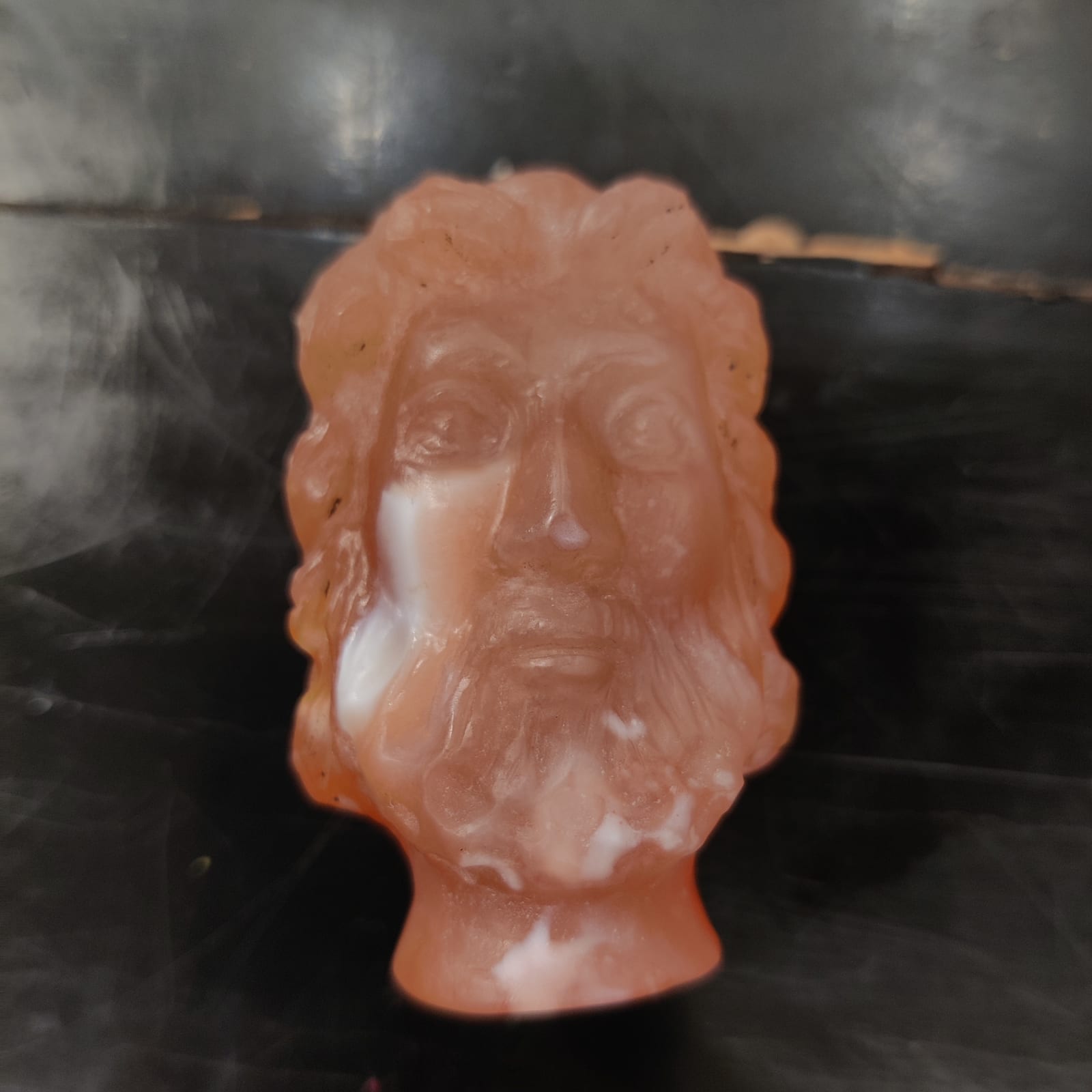Carnelian Head of Zeus, c. 100 CE to 400 CE
Carnelian
height 5.5 cm
height 2 1/8 in
height 2 1/8 in
GM.0200
An outstanding head of Zeus realised in Carnelian. The god is represented with flowing wavy swept back, rich beard, and heavy lidded eyes. The mouth is fleshy and the nose...
An outstanding head of Zeus realised in Carnelian. The god is represented with flowing wavy swept back, rich beard, and heavy lidded eyes. The mouth is fleshy and the nose is pronounced, conferring a hieratic and serious aura to the figure of the god. The iconography of the god Zeus is taken from a late Classical or early Hellenistic type that gained new popularity in the middle Imperial Roman period. It finds an attractive comparable in a Head of Zeus Ammon preserved at the Metropolitan Museum of New York (accession number 2012.22), whose original was probably created in Egypt in the years after Alexander’s historic visit to Siwa.
Carnelian stones and artworks made thereof were immensely popular throughout the Classical world. The stones originated from deposits in the Arabian Peninsula and India. Like the Egyptians and the Greeks, the Romans believed that the carnelian stone was endowed with magical powers capable of warding off the evil eye.
This piece, with the finesse and intricacy of the details testifies the level of artistic prowess of Roman artists and the great value they attached to sculptures in carnelian for their religious - magical properties. In this case, the use of a stone imbued with supernatural powers and the representation of the father of the gods are clearly meant to combine their might.
This is an outstanding work of art befitting the most discerning collectors.
Carnelian stones and artworks made thereof were immensely popular throughout the Classical world. The stones originated from deposits in the Arabian Peninsula and India. Like the Egyptians and the Greeks, the Romans believed that the carnelian stone was endowed with magical powers capable of warding off the evil eye.
This piece, with the finesse and intricacy of the details testifies the level of artistic prowess of Roman artists and the great value they attached to sculptures in carnelian for their religious - magical properties. In this case, the use of a stone imbued with supernatural powers and the representation of the father of the gods are clearly meant to combine their might.
This is an outstanding work of art befitting the most discerning collectors.
